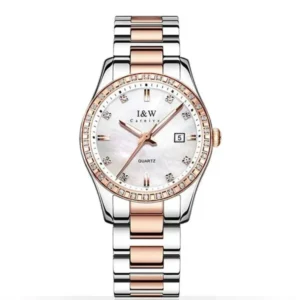How to Handle Feedback and Whistling in Private Hearing Aids
Feedback and whistling are common challenges for hearing aid users, especially those using private hearing aids for the first time. These unwanted noises can be frustrating and uncomfortable, often distracting from the improved hearing experience that hearing aids are meant to provide. Fortunately, there are ways to manage and reduce these issues, ensuring that your hearing aids perform optimally.
In this article, we’ll explore the causes of feedback and whistling in hearing aids, offer practical solutions to manage these problems, and highlight how Almond Hearing can help you maintain and fine-tune your devices for the best experience.
1. What Causes Feedback and Whistling in Hearing Aids?
Feedback occurs when the sound from your hearing aid’s speaker is picked up by its microphone, causing a loop of amplified sound that results in a whistling or squealing noise. This can happen in various situations, such as when the hearing aid is too close to your ear or not properly fitted.
Common Causes of Feedback:
- Poor Fit: If your hearing aid is not sitting properly in your ear, sound can escape and re-enter the microphone, leading to feedback.
- Earwax Blockage: Earwax buildup can cause sound to bounce off and be picked up by the hearing aid’s microphone, resulting in whistling.
- High Volume: Turning up the volume too high can cause the hearing aid to produce sound that escapes and is picked up by the microphone again.
- Proximity to Objects: Holding objects like a phone or even cupping your hand near your ear can cause feedback due to the change in sound reflection.
Understanding these causes will help you identify the right solutions for reducing or eliminating feedback in your Private Hearing Aids.
2. Simple Fixes for Feedback and Whistling
The good news is that most feedback and whistling problems can be easily fixed. By making minor adjustments to your hearing aids or your routine, you can enjoy a more comfortable and uninterrupted listening experience.
2.1 Refit Your Hearing Aids
Ensuring that your hearing aids fit snugly and correctly in your ear is one of the most effective ways to prevent feedback. Custom molds for in-the-ear (ITE) or behind-the-ear (BTE) hearing aids can significantly reduce whistling by providing a better seal.
2.2 Keep Your Ears Clean
Earwax buildup can interfere with the proper function of your hearing aids. Regular cleaning of your ears can prevent this issue. It’s important to follow professional cleaning methods to avoid pushing earwax deeper into the ear canal, which could cause blockages.
2.3 Lower the Volume
High volume levels can lead to feedback by amplifying sounds to a level where they escape and get picked up by the microphone. Instead of increasing the volume, try adjusting the settings or seeking advice from your audiologist on how to improve sound clarity at a lower volume.
2.4 Adjust How You Hold Your Phone
If you experience feedback when using a phone, try adjusting the way you hold the phone. Hold it slightly away from your ear rather than directly over the hearing aid, or consider using Bluetooth-enabled hearing aids to connect directly to your phone without needing to hold it close.
3. Advanced Feedback Cancellation Technology
Most modern hearing aids come with built-in feedback management features designed to reduce or eliminate whistling and feedback sounds. These systems detect feedback loops and automatically adjust to stop the whistling before it becomes noticeable.
3.1 Feedback Suppression
This technology monitors the sounds produced by your hearing aids and automatically reduces or suppresses feedback before you even hear it. If you’re experiencing consistent feedback, ask your audiologist about activating or improving this feature.
3.2 Directional Microphones
Hearing aids with directional microphones help you focus on sounds from in front of you while reducing sounds from other directions. This can minimize the chance of feedback caused by environmental factors or loud noises.
3.3 Digital Signal Processing (DSP)
DSP is a powerful feature that many high-quality hearing aids offer. It processes sound in real-time, filtering out unwanted feedback and adjusting sound amplification to your surroundings.
Almond Hearing offers a variety of advanced hearing aids equipped with state-of-the-art feedback management technologies, helping you achieve a smoother listening experience without the distracting sounds of whistling and feedback.
4. Preventive Measures for Whistling and Feedback
Preventing feedback and whistling issues can save you time and frustration. By following a few simple steps in the maintenance and use of your private hearing aids, you can minimize the likelihood of these problems occurring.
4.1 Regular Maintenance and Cleaning
Maintaining your hearing aids properly is key to preventing feedback. Clean them regularly to remove any earwax, dirt, or debris that may interfere with the microphone or receiver. If your hearing aids have wax guards, ensure they are cleaned or replaced as needed.
4.2 Get Regular Private Hearing Tests
Hearing changes over time, and so should your hearing aids. Regular Private Hearing Tests can help ensure that your hearing aids are still providing optimal performance. An audiologist can reprogram or adjust the settings to match any changes in your hearing, which can also help prevent feedback.
During these tests, the audiologist may also check if the fit of your hearing aids needs to be adjusted, particularly if you’ve had custom molds made. By staying on top of regular check-ups, you can avoid unnecessary issues and extend the life of your devices.
4.3 Protect Your Hearing Aids from Moisture
Moisture is one of the leading causes of hearing aid malfunction. Keep your hearing aids dry by using a dehumidifier or a drying kit. Not only does this help preserve the device’s lifespan, but it can also prevent issues such as feedback and whistling caused by moisture affecting the internal components.
5. Troubleshooting Persistent Feedback Issues
If you’ve tried the above solutions and are still experiencing feedback, it’s a good idea to consult with an audiologist. Persistent feedback could indicate a more significant problem with your hearing aids or your hearing.
5.1 Seek Professional Adjustments
Sometimes, your hearing aids may need more than just a simple refitting or volume adjustment. If feedback persists, schedule an appointment with a professional audiologist to evaluate the settings on your devices. They may need to adjust the gain or programming to better suit your current hearing levels.
5.2 Reprogramming Hearing Aids
Hearing aids are often programmed based on your initial hearing assessment. However, if your hearing has changed or you’re frequently exposed to different sound environments, reprogramming your hearing aids may help to eliminate feedback.
Almond Hearing specializes in providing tailored solutions and expert guidance. Their professional audiologists can assess your current hearing aids and make necessary adjustments to eliminate persistent feedback or whistling.
Conclusion
Feedback and whistling in private hearing aids are common but manageable issues. By understanding the causes of these problems and following practical steps to fix them—like ensuring proper fit, regular cleaning, and using advanced technologies—you can enjoy a seamless hearing experience.
Modern hearing aids, especially those offered by Almond Hearing, come equipped with feedback management technologies that significantly reduce these unwanted noises. Whether you’re a first-time user or someone looking to optimize the performance of your current hearing aids, professional support and regular Private Hearing Tests can help keep feedback at bay.














Post Comment